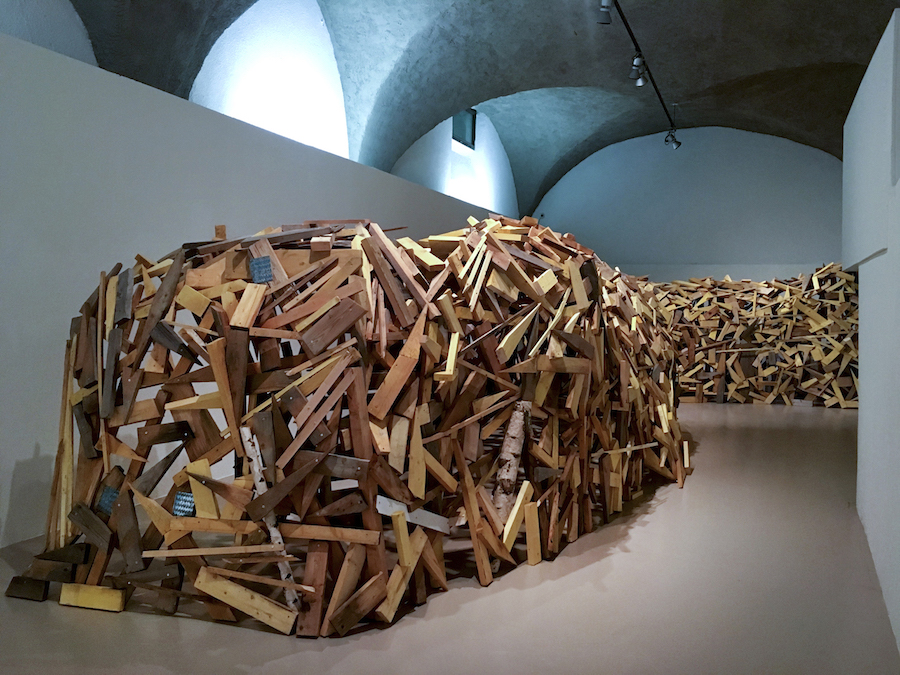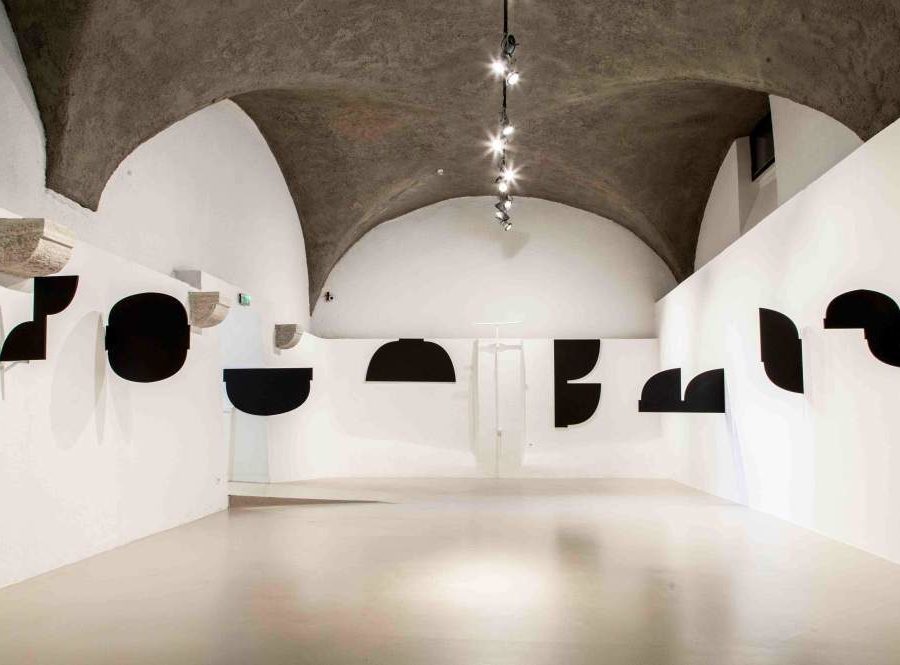Nomadisme
Three artists presented by three curators – Lorenzo Giusti, Gloria Picazo and Anne Alessandri – read and interpret the spaces of the FRAC in Corte, linking exterior and interior with projects specially designed for the exhibition.
Francesco Gennari (Italy, 1973) creates minimal works using various materials, such as marble, glass, steel, or organic materials such as flour or sugar. All materials, without hierarchical distinctions, contribute to the realisation of works characterised by a rigorous formal synthesis, within which the artist seeks to transfer his own emotional states. Many works, including geometric sculptures, are presented as self-portraits, executed in certain contexts or at particular times of the day.
FRAC Corse will present two series of works. The first – Il luogo dove non c’è più posto per la coscienza (2008) – is an observation of the boundaries of the artist’s studio. Certain segments of the perimeter, but also the rectangular edge of two columns, are measured and faithfully reproduced in the form of strips of silver beads. Moved to a new environment, the physical space, the studio, becomes a mental place, ideally transferable to the four corners of the world.
The installation of pearls is accompanied by a new series of drawings, created after a visit to the FRAC spaces. Made in pencil, or sometimes in red chalk, with fine and rapid lines, the drawings represent chaotic and indeterminate mental landscapes, inner spaces where images, memories and new ideas intertwine, producing a tangled mess.
As a student of Fine Arts in the city of Cuenca, Juan López (Spain, 1979) began to make a series of urban interventions using walls that he covered with posters glued one on top of the other to cut and re-cut with a cutter to reveal new iconic and linguistic messages. This was in 2002 and since then his work has been a continuous reflection on the urban landscape, on the number of new visual stimuli we receive when we are free to walk through the city, but also on how the urban landscape can penetrate confined spaces as, for example, happened in the Art Centre la Panera in Lleida in 2012.
If in the first case, the projects responded to the interest that an advertising poster, a typography or a building under construction can arouse, in the second, its main objective was to question the architecture, the cracking of the walls and to allow what existed beyond the walls to penetrate the art centre.
At the FRAC Corse, Juan López carried out two types of interventions: one for the interior spaces, for which he invented a new typography created from the supports that maintain the vault of the central nave; the second, for which, starting from an architectural element that is the window and the letter C of the word FRAC present on one of the shutters, the word “aperçue” becomes the link between the interior and the exterior, while its own meaning indicates an action: that of the spectator who is observing the landscape behind the window at the same moment.
In the artist’s own words, his proposals are always made from the possibilities offered by the spaces in which he intervenes, aiming to “break and then reconstitute the links between the three elements that make up the equation of my work: the city, subjectivity and power.”
The work of Tatiana Wolska (Poland 1977) is singular, known and distributed mainly in France and Poland. Winner of the Salon de Montrouge in 2014, she also exhibited at the Palais de Tokyo in 2014 and 2015. She began by making her sculptures from recuperated elements, plastic bottles, wood scraps… inventing a technique for each material. The forms are born from precise, repeated gestures and, although concrete and clear in their contours, they never seem fixed but in transformation: a kind of interpretation of the non finito. It is not that the sculptures are unfinished, but rather that they seem to be able to evolve, as if animated by a life of their own. The same is true of the works on paper. Because randomness does not correspond to a design or a state but to an imperative of life, of movement. The term “organic” is often used in connection with the work of Tatiana Wolska, who associates it with the idea of parasites.
At the FRAC Corse in Corte, Tatiana Wolska will use wood, continuing the complicity of the partnership with Les Charpentiers de la Corse. She will work in areas and surfaces that Francesco Gennari and Juan López have not chosen, integrating these data – deliberately intended constraints – into the work she will develop in the interior and exterior spaces.
FRAC Corse
17.12.2015-16.03.2016Catalogue
Éditions du FRAC Corse.
Ph: Alice StellaDate
December 12, 2015


